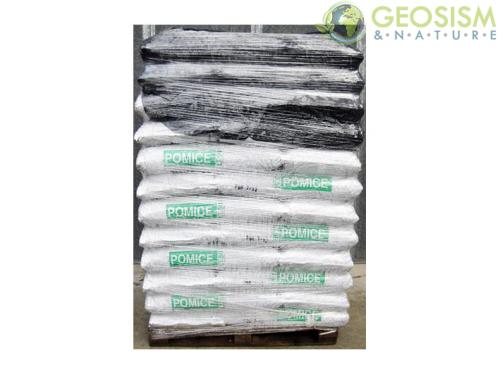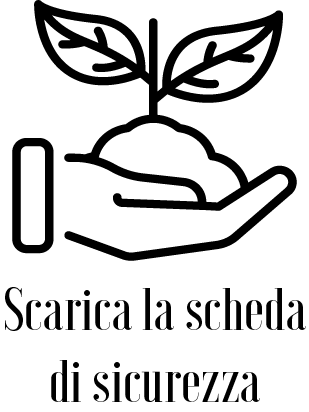Pumice 1/3 mm (pallet of 36 bags of 50 lt)
PUMICE 1/3 mm (pallet of 36 bags of 50 lt).
Pumice and lapilli are the product of explosive volcanic eruptions formed as a result of a violent expansion of gases dissolved in lava of acidic chemical composition: the rapid cooling of the rock prevented its crystallization, trapping the gases inside and generating minerals alveolar expanded in a more or less accentuated way.
In fact, during the solidification phase, the vapors present in the magma, suddenly released, caused the swelling of the entire mass of magma and it is during this rapid cooling phase that the differences in the physical structure of the various volcanic aggregates were determined: the volcanic lapilli it was formed from a magma with a lower silica content.
The lower viscosity and the slower cooling of the lava facilitated the escape of a certain quantity of the gases present in the magma.
Minerals were formed characterized by emptiness with an average diameter greater than those of pumice but of a decidedly lower number.
MEDIUM CHEMICAL ANALYSIS
SiO2: 62.5%
Al2O3: 17.5%
K2O: 9.5%
Fe2O3: 2.6%
CaO: 2.5%
Na2O: 2.2%
TiO2: 0.5%
MgO: 0.4%
TECHNICAL FEATURES
pH : 6.5 - 7.0;
CATION EXCHANGE : 30 meq / 100g.
FUNCTIONAL CHARACTERISTICS AND FIELDS OF USE
Lightweight natural inert, ideal for:
? rooting substrate (sowing, cuttings, transplants, soilless crops and hydroculture);
? preparation of universal molds;
? preparation of specific soils (annuals, acidophilic plants, succulents, houseplants, lawns?);
? preparation of professional soils for outdoor horticultural nurseries and protected crops;
? mulch flower beds or areas of the garden where you want to avoid the growth of grasses or weeds;
? hydroponic crops;
? land amendment;
? hydroculture;
? drainage;
? support surface for vases;
? thermal insulation.
NB: NEWS ON GRANULOMETRY
It should be noted that the granulometry of the aggregate in question could undergo small variations with respect to the value in mm indicated in the title of the advertisement (granulometry indicated by the manufacturer and therefore not to be attributed to Geosism & Nature sas which deals only with marketing) as the Mechanical screening is carried out with sieves which, depending on the degree of abrasion / wear, could allow lower or even higher granules to pass than the measure described above. It should also be noted that the aforesaid material, when crushed, can form elongated clasts and therefore granules could be found which pass through the sieve indicated in the title of the insertion according to the short side but which therefore have a greater measure on the long side. The Geo













